How Pallet Inverters Solve Worker Safety Amid Rising Logistics Demand in Indonesia?
Indonesia's logistics sector is booming. I've seen it with my own eyes on visits to Jakarta and Surabaya. Warehouses are expanding, and the pace of work is faster than ever. But this rapid growth comes with a serious problem. The pressure to move goods quickly is putting warehouse workers at risk. Manual handling of heavy pallets is a recipe for back injuries, sprains, and chronic pain. These injuries are not just personal tragedies; they create huge problems for businesses, leading to lost workdays, high insurance costs, and a constant struggle to find and keep good staff. As a factory owner myself, I know that the safety and well-being of your team is directly linked to the health of your entire operation.
A pallet inverter solves worker safety issues in Indonesia's demanding logistics sector by automating the task of turning, swapping, or reorienting heavy pallet loads. This automation completely removes the need for manual lifting, bending, and restacking. These are the main causes of musculoskeletal injuries. By using a machine for this heavy work, you create a much safer, more efficient, and more productive environment for your employees.
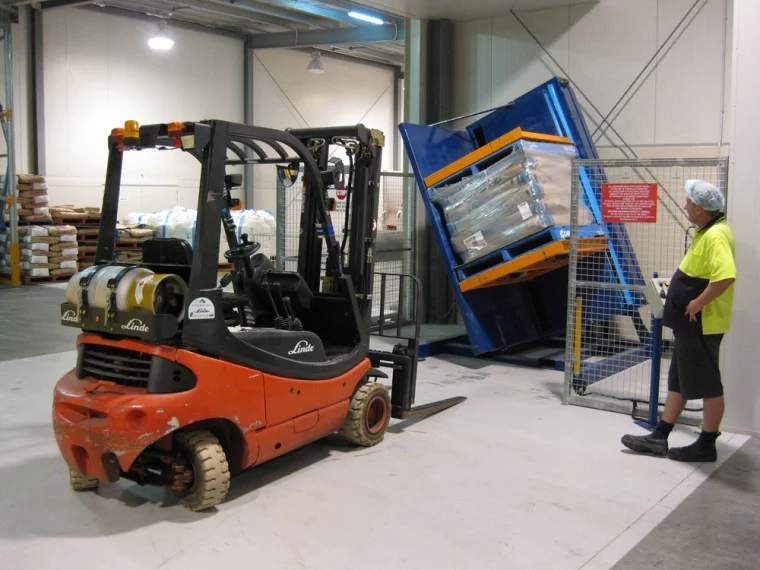
This solution might seem simple, but its impact is huge. I’ve spent my entire career in the packing machine industry, first as an engineer and now as the founder of SHJLPACK. I have helped countless clients transform their operations, and I've learned that the best investments are often the ones that solve a core human problem. Protecting your workers is not just a compliance issue; it's a fundamental business strategy. Let's explore exactly how this technology addresses the specific challenges faced in the Indonesian market and why it's a smart move for any forward-thinking logistics manager or business owner.
What specific safety risks do manual pallet handling pose in Indonesian warehouses?
The fast-paced environment of a modern Indonesian warehouse creates a perfect storm for accidents. Workers are under constant pressure to meet quotas. They often have to lift and move heavy, awkward loads by hand. This can lead to serious injuries. Think about a worker trying to manually transfer a stack of boxes from a broken wooden pallet to a new plastic one. The risk of a box falling, a back being strained, or a foot being crushed is incredibly high. These aren't just possibilities; they are daily realities that damage both your workforce and your company's finances through downtime and compensation claims.
The most common safety risks from manual pallet handling in Indonesian warehouses are musculoskeletal disorders (MSDs) like back sprains, herniated discs, and shoulder injuries caused by repetitive lifting and twisting. Other major risks include crushed hands and feet from falling loads or collapsing pallets, and lacerations from broken pallet wood and nails.
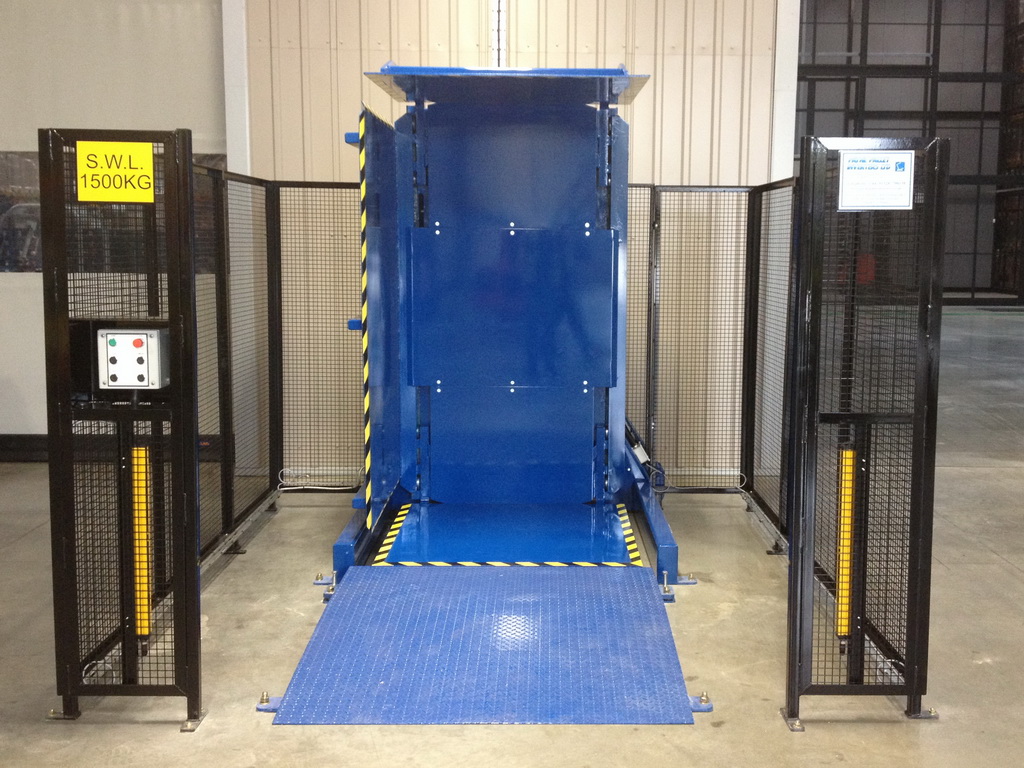
A Deeper Look at Warehouse Dangers
Let's break down these risks in more detail. From my experience visiting facilities across Southeast Asia, the dangers are often underestimated until a serious incident occurs. The problem is systemic and rooted in the physical demands of the job.
The Anatomy of an Injury
Musculoskeletal disorders (MSDs) are the most frequent and costly issue. They don't usually happen from a single event. Instead, they develop over time from the cumulative strain of daily tasks. A worker bending to lift a 20kg box from a pallet might not feel pain the first time, or even the hundredth time. But the repetitive stress on the spine, shoulders, and knees adds up. In Indonesia's warm and humid climate, fatigue sets in faster, and sweaty hands can make grips less secure, increasing the risk. Twisting the body while carrying a heavy load is one of the most dangerous movements for the lower back, yet it's a common action when moving goods between pallets or onto a conveyor. This is how a simple task leads to a chronic, debilitating injury that can end a worker's career.
Acute vs. Chronic Risks
We can categorize the physical risks into two types: acute and chronic. Both are prevalent in manual pallet handling scenarios.
| Risk Category | Specific Dangers | How It Happens | Long-Term Impact |
|---|---|---|---|
| Acute | Crushed limbs, fractures, deep cuts | A poorly stacked pallet collapses; a worker drops a heavy box; a hand gets caught between pallets. | Immediate medical attention, lost workdays, potential disability. |
| Acute | Lacerations and splinters | Handling broken wooden pallets with sharp edges, exposed nails, and splinters. | Infection, stitches, risk of tetanus. |
| Chronic | Lower back pain, herniated discs | Repetitive bending and twisting to lift goods from floor level. | Constant pain, reduced mobility, potential need for surgery. |
| Chronic | Shoulder tendinitis, rotator cuff tears | Repeatedly reaching and lifting items above shoulder height. | Limited range of motion, chronic pain, inability to lift. |
| Chronic | Carpal tunnel syndrome | Repetitive hand and wrist movements while gripping and moving boxes. | Numbness, weakness, and pain in the hands and wrists. |
A few years ago, I was working with a client in the food and beverage industry in Bekasi. Their warehouse team was experiencing a high rate of back-related sick days. Their process involved manually unstacking bags of ingredients from incoming wooden pallets to place them onto their internal, hygienic plastic pallets. The cost of lost productivity and worker compensation was becoming a major concern. It was a clear case where the process itself was the problem. The risks were not just a possibility; they were a guaranteed outcome of the manual workflow.
How does a pallet inverter directly improve ergonomic conditions for workers?
Imagine your best warehouse worker. They are strong, efficient, and reliable. Now, imagine them having to spend a significant part of their day bent over, lifting heavy items one by one from one pallet to another. This posture puts immense strain on their lower back and shoulders. It is not a question of if they will get injured, but when. The physical toll is immense, leading to fatigue, reduced productivity, and eventually, a serious injury that takes them off the floor. This is a poor use of a valuable employee's skill and energy.
A pallet inverter directly improves ergonomics by taking the human body out of the most dangerous part of the equation. It uses mechanical power to securely clamp and rotate the entire load. This allows a worker to swap pallets at a comfortable, waist-high level without any lifting, bending, or twisting. The machine does all the heavy work, transforming a high-risk task into a safe, simple, and quick process.
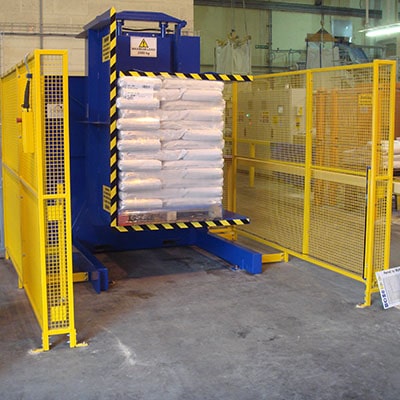
The Mechanics of Safety
To truly understand the ergonomic benefit, we need to compare the manual process with the machine-assisted process. The difference is night and day. As an engineer, I love breaking down a process to its core movements. It's here that you see the true value of well-designed equipment.
The Manual Method: A Recipe for Strain
Let's analyze the steps a worker must take to manually transfer a load:
- Bend at the waist: The worker has to bend down to reach the bottom layer of the pallet. This action places significant compressive force on the lumbar spine.
- Lift with the back: Often, workers lift with their back muscles instead of their legs, especially when working quickly. This is a primary cause of herniated discs.
- Twist the torso: They lift the item and then twist their body to place it on the new pallet. This combination of lifting and twisting is extremely damaging to the spinal discs and surrounding muscles.
- Repeat: This entire sequence is repeated dozens or even hundreds of times per pallet. The cumulative strain is enormous.
The ergonomic principle here is simple: the human body is not designed to be a crane. Forcing it into these roles, day after day, leads to predictable mechanical failure, which we call injury.
The Pallet Inverter Method: A Model of Efficiency
Now, let's look at the process with a pallet inverter:
- Load the pallet: A forklift driver places the entire palletized load into the inverter. There is no manual lifting.
- Activate the machine: The operator presses a button. The inverter's top platen and side walls secure the load. This is done with hydraulic or electric power, not human muscle.
- Rotate: The machine gently rotates the load 180 degrees. Gravity is now an aid, not a risk.
- Swap and complete: The original pallet is now on top, easily removed and replaced. The machine rotates back, and the load now sits perfectly on the new pallet, ready to be removed by the forklift.
The worker's role changes from manual laborer to machine operator. They stand upright, press buttons, and supervise a safe process. The physical strain is virtually eliminated. This not only prevents injuries but also reduces fatigue, which helps maintain focus and reduce other types of errors throughout the day.
| Ergonomic Stressor | Manual Pallet Transfer | Pallet Inverter Process |
|---|---|---|
| Bending | Constant bending at the waist | Eliminated. Worker stands upright. |
| Lifting | Repetitive lifting of individual items (5-25 kg) | Eliminated. The machine lifts the entire load (1-2 tons). |
| Twisting | Constant twisting of the torso while under load | Eliminated. The worker does not carry any weight. |
| Repetitive Motion | High repetition of stressful movements | Reduced to pushing buttons and simple actions. |
This isn't just theory. I've seen the change in warehouses I've worked with. The energy on the floor shifts. Workers are less tired, morale improves, and the entire operation becomes smoother and more professional.
Can pallet inverters integrate with existing warehouse systems in Indonesia?
A business owner or a plant manager like Javier Morales always thinks about the big picture. You look at a new piece of equipment and ask, "How will this fit into what I already have? Will it create a bottleneck? Or will it streamline my entire process?" It's a valid and crucial question. Introducing a standalone machine that disrupts your workflow is a step backward. The fear is that a new machine will be an "island," forcing you to create inefficient workarounds that negate its benefits.
Yes, pallet inverters can be seamlessly integrated into existing warehouse systems in Indonesia. They are available as standalone units for forklift-fed operations, but they can also be designed as fully automated, in-line systems that connect directly to conveyor belts, automated guided vehicles (AGVs), and your Warehouse Management System (WMS).
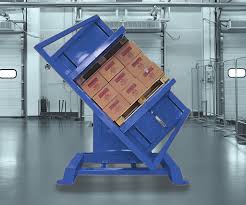
Levels of Integration: From Simple to Sophisticated
The beauty of modern pallet handling equipment is its flexibility. At SHJLPACK, we don't believe in a one-size-fits-all solution. The right level of integration depends on your current operational maturity and your future goals. This is something I discuss in-depth with every client.
Level 1: Standalone Workstation
This is the most common and easiest way to start.
- How it works: The pallet inverter is placed in a dedicated area of the warehouse. A forklift brings a pallet that needs to be swapped, places it in the machine, and removes it once the process is complete.
- Best for: Facilities with lower throughput needs or those who want to solve a specific problem (like damaged pallet replacement) without overhauling their entire layout. It's a quick win.
- My experience: I helped a medium-sized exporter in Semarang set this up. They needed to switch from their internal wooden pallets to heat-treated export pallets. A simple, forklift-loaded 180-degree inverter was all they needed. It was installed and running in a single day and immediately solved their problem without disrupting the rest of their operations.
Level 2: Semi-Automated In-line System
This is a step up in efficiency.
- How it works: The pallet inverter is placed at the end of a conveyor line. Pallets travel down the conveyor and enter the inverter automatically. An operator might oversee the process, but the feeding and removal can be automated with additional short conveyor sections.
- Best for: Production facilities where goods come off a line and need to be transferred to a shipping pallet, or receiving docks where incoming goods must be moved to internal "captive" pallets.
Level 3: Fully Automated Integration
This is the goal for a highly automated, data-driven facility, the kind of digital transformation Javier is aiming for.
- How it works: The pallet inverter is a fully integrated node in your automated warehouse. It communicates directly with your WMS or MES. The system knows when a pallet needs swapping and directs an AGV or conveyor to deliver it. The inverter performs the task without human intervention and signals the system when it's complete.
- Best for: Large distribution centers, high-tech manufacturing plants, and cold storage facilities that want to minimize human presence and maximize efficiency and data tracking.
| Integration Level | System Components | Operator Involvement | Typical Application |
|---|---|---|---|
| Standalone | Pallet Inverter, Forklift | High (Loading/Unloading) | Damaged pallet replacement, load straightening |
| Semi-Automated | Inverter, In-feed/Out-feed Conveyors | Medium (Supervision) | End-of-line palletizing, receiving docks |
| Fully Automated | Inverter, Conveyors, AGVs, WMS/MES, Safety Scanners | Low (Monitoring only) | "Lights-out" warehouses, high-volume distribution |
The key is that you can start at Level 1 and evolve. The technology is scalable. You can solve an immediate safety and efficiency problem today with a standalone unit, with a clear path to greater automation as your business grows and your systems become more sophisticated.
What is the real ROI of a pallet inverter beyond just safety improvements?
Every smart business owner, especially someone with an engineering and financial background like Javier, knows that a purchase must be justified on the balance sheet. Safety is critically important, but the numbers have to make sense. You're asking, "Beyond preventing injuries, how does this machine make me money or save me money?" This is my favorite part of the conversation because the financial benefits are just as compelling as the safety improvements. Thinking only about safety misses half the picture.
The real ROI of a pallet inverter extends far beyond safety. It delivers significant financial returns by dramatically increasing operational speed, reducing labor costs for manual handling, minimizing product damage during transfer, and improving overall supply chain efficiency. It turns a costly, slow bottleneck into a fast, profitable process.
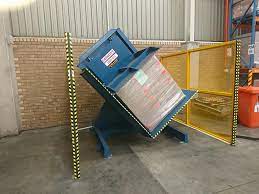
Unpacking the Financial Gains
Let's move past the abstract and talk about concrete financial metrics. The return on investment (ROI) comes from several key areas. I’ve seen these play out time and again with my clients, helping them achieve the kind of cost reductions that directly impact the bottom line.
Drastic Reduction in Labor Costs
This is the most direct financial win. Consider a manual process requiring two workers to spend 20 minutes to transfer the contents of one pallet.
- Manual: 2 workers x 20 minutes = 40 minutes of labor per pallet.
- With a Pallet Inverter: 1 forklift driver (who is already there) spends about 2 minutes.
The labor savings are massive. If you transfer 30 pallets a day, you're saving almost 20 hours of manual labor every single day. That labor can be reallocated to more value-added tasks like quality control or order picking, not low-skill, high-risk manual handling. This directly addresses the goal of reducing overall operating costs.
Increased Throughput and Productivity
Speed equals money in logistics. A slow pallet transfer process is a bottleneck that holds up your entire receiving or shipping dock.
- Manual Bottleneck: A truck might have to wait for an hour while pallets are manually reworked. This can lead to detention fees and strained relationships with carriers.
- Automated Flow: With a pallet inverter, that same process takes a fraction of the time. Trucks are in and out faster. Your dock has more capacity. This directly contributes to the goal of increasing capacity utilization. I had a client in the chemical industry who was able to increase the number of trucks they could process per shift by 30% just by eliminating this one manual step.
Minimized Product Damage
When workers are manually unstacking and restacking, things get dropped, dented, and broken. This is especially true for fragile goods or consumer products where pristine packaging is essential.
- The Cost of Damage: Every damaged item is a direct loss. It's not just the cost of the product; it's the cost of disposal, the cost of paperwork, and the potential loss of a customer.
- The Machine's Gentle Handling: A pallet inverter clamps the load securely before rotating it. The process is smooth and controlled. The risk of dropping a box is virtually zero. This reduces product damage rates to almost nothing, turning a variable cost into a predictable, near-zero expense.
Here is a simplified ROI calculation model I often walk clients through:
| Cost Category | Manual Process (Annual Estimate) | With Pallet Inverter (Annual Estimate) | Annual Savings |
|---|---|---|---|
| Labor | $25,000 (1 FTE focused on this) | $2,500 (10% of 1 FTE's time) | $22,500 |
| Worker Comp | $5,000 (Based on industry avg.) | $500 (Reduced risk premium) | $4,500 |
| Product Damage | $10,000 (1% of handled value) | $1,000 (0.1% of handled value) | $9,000 |
| Total Savings | - | - | $36,000 |
If a pallet inverter costs, for example, $25,000 - $45,000, you can see that the payback period is often just over a year. For a business leader focused on financial performance and operational excellence, this is a compelling investment. It’s not an expense; it’s a strategic move to build a more resilient, safe, and profitable operation.
Conclusion
Investing in a pallet inverter directly tackles worker safety, a critical issue in Indonesia's growing logistics market. It also boosts efficiency, cuts costs, and delivers a strong, fast return on investment.



